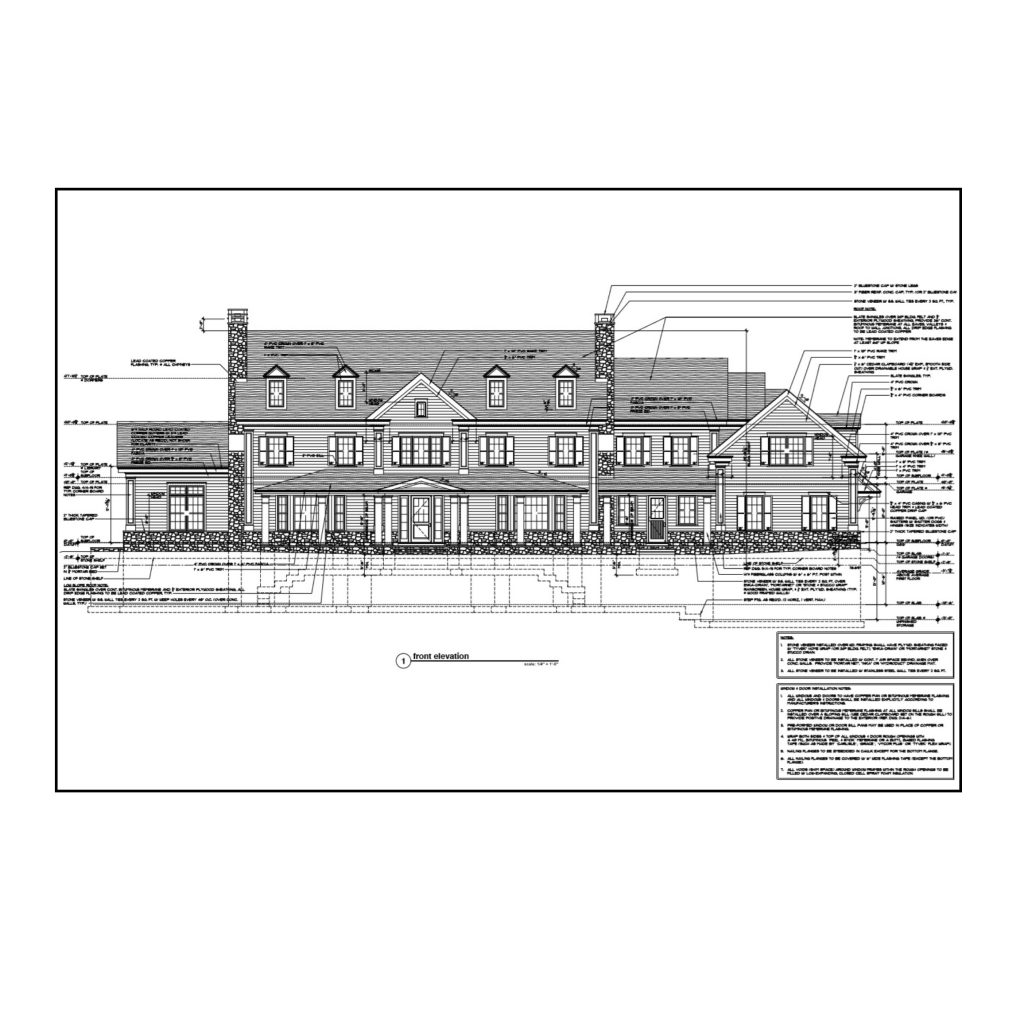Why You Should Involve Your Architect During Construction
First time remodeling or having an addition built?
First time working with a particular builder?
Involving your architect for a few hours during construction can save you a lot of money in the long run & give you peace of mind.
Involving an architect during the construction phase can ensure that your project goes according to plan, literally.
Unless a homeowner is familiar with the building process or has worked with his/her builder before, it’s smart to involve the architect during the construction phase to be sure the builder is following the architect’s construction plans.
Don’t Just Assume Everything’s Going to Plan
I’ve been practicing architecture for 30 years (view projects here) and have pretty much seen it all when it comes to construction. Good builders will follow my construction drawings to the letter and even go beyond the specs, while others seem to think the construction drawings are “suggestions” and proceed to do whatever they want. If I’m involved during construction, I can observe their work and confirm it’s being done correctly. If I’m not involved, all bets are off & you’re hoping the builder is following the plans & that you’re getting what you’re paying for.
The following story is a recent example of why a homeowner should involve the architect during construction:
A current client of mine with a project under construction, recently called me to do a site visit to check up on the builder (who I didn’t personally know). I specifically remember my client telling me that this builder was so much less expensive than others…now we both know why.
After walking through the job site and inspecting his work, I went back to my office & wrote a “field report” that documented all the mistakes I found:
- Aluminum flashing was used where I had specified copper flashing. There’s a huge difference in price & quality, & flashing is not somewhere to cut corners.
- The flashing was installed wrong, which would have led to a leaky roof. All flashing had to be removed & replaced.
- There was no copper flashing at the roof valleys, which was specified. The roof shingles around all the valleys had to be removed so the copper valley flashing could be installed.
- The headers above windows were specified as engineered lumber, but sawn lumber was used instead…which will shrink & lead to cracks in the sheetrock & interior trim. All headers had to be removed & replaced.
- All windows were installed incorrectly, with no sill pan flashing. All windows had to be removed & reinstalled.
- The house wrap was installed sloppily, not according to the installation instructions. The house wrap had to be installed correctly & then taped.
- The seams in the “zip wall” sheathing were not taped, which is critical for it to be watertight. If not taped, it will lead to water leaks. The seams in the sheathing had to be taped.
It was clear to me that this builder was taking shortcuts by making material substitutions, without the client’s knowledge. He was substituting inferior, less expensive materials and pocketing the difference. It would be one thing if he proposed these substitutions to the homeowner to save him some money, but that wasn’t the case.
Once confronted with my field report, the builder apologized profusely to my client & proceeded to correct the mistakes at his own expense. I did a follow up site visit a few weeks later only to find that some of the mistakes were corrected, while other mistakes were not. At this point my client lost all faith in this builder, and he was let go. I’d put money on the fact that the builder was not planning on his work being inspected by me, and thought he could pull one over on the homeowner since I wasn’t involved.
Take Steps to Ensure Your Project is Successful
Most homeowners do not understand construction and have no idea what they’re looking at during the building process. They’re just happy to see something getting done and they assume it’s correct. While renovations and custom home projects are exciting, it’s important to work with professionals you know and trust. You should trust the builder, but sometimes that trust needs to be earned first. By the time construction starts, the 1 person who you should trust by then is your architect.
When you pay for a building permit, that fee is for many inspections they’re supposed to do during the course of construction. Unfortunately, just because the work got inspected & approved by the building inspector doesn’t necessarily mean it’s right (content for a future blog post!).
If I hadn’t been involved to provide an occasional site visit during construction, my client would have been taken advantage of by paying for materials that were not installed. He would have also paid for inferior work in terms of quality. There definitely would have been problems after the project was complete, which might take years to surface. Repairing a leaking roof and cracks in the sheetrock and trim would be very costly to repair later, at an additional cost.
For a few hours of my time, my client has the peace of mind that his project is built according to the construction drawings, which was confirmed by me. In my opinion, any money spent to involve the architect during construction is money well spent. This is just one of many stories…I’m sure there will be more.
DeMotte Architects | Fairfield County CT Architect | Westchester County NY Architect
To schedule a free consultation for your new home or home remodel project in Fairfield County CT, Westchester County NY, and surrounding areas, contact us or email brad@demottearchitects.com.
In addition to our architectural services, we can also provide a list of our preferred builders that we’ve personally worked with successfully on multiple projects.


0 comments